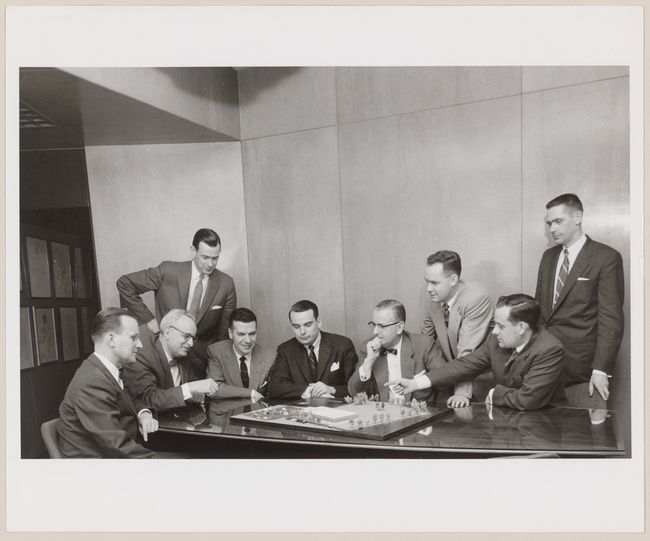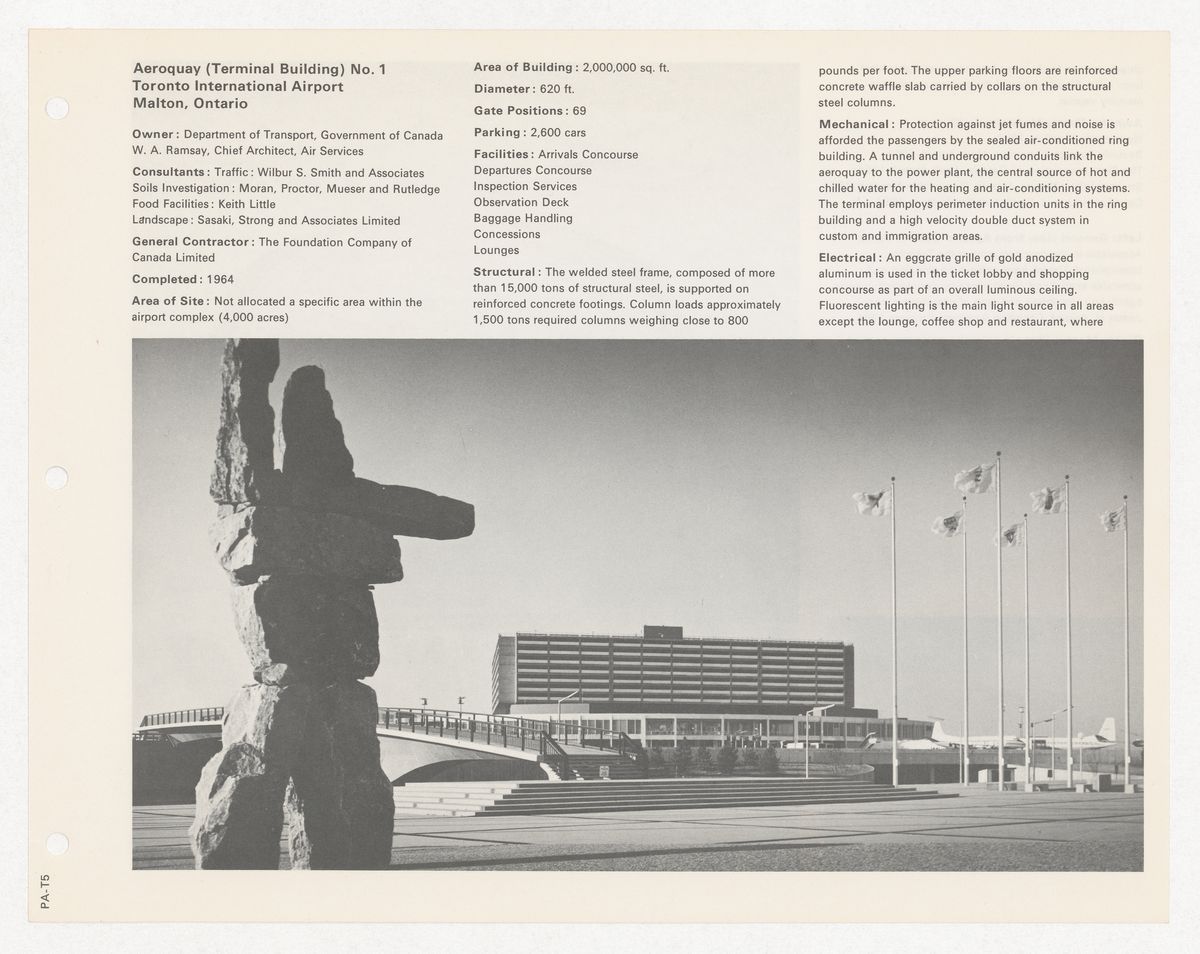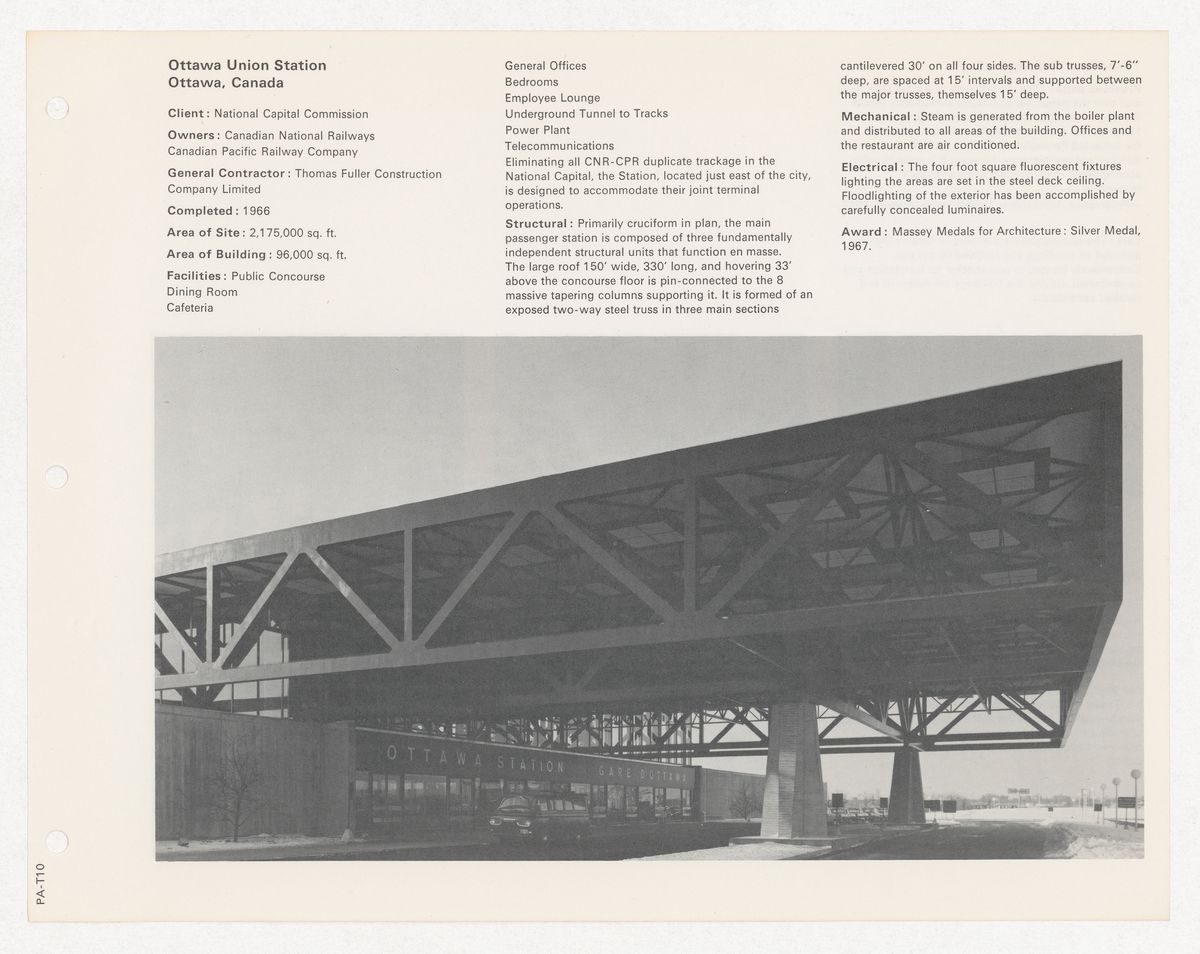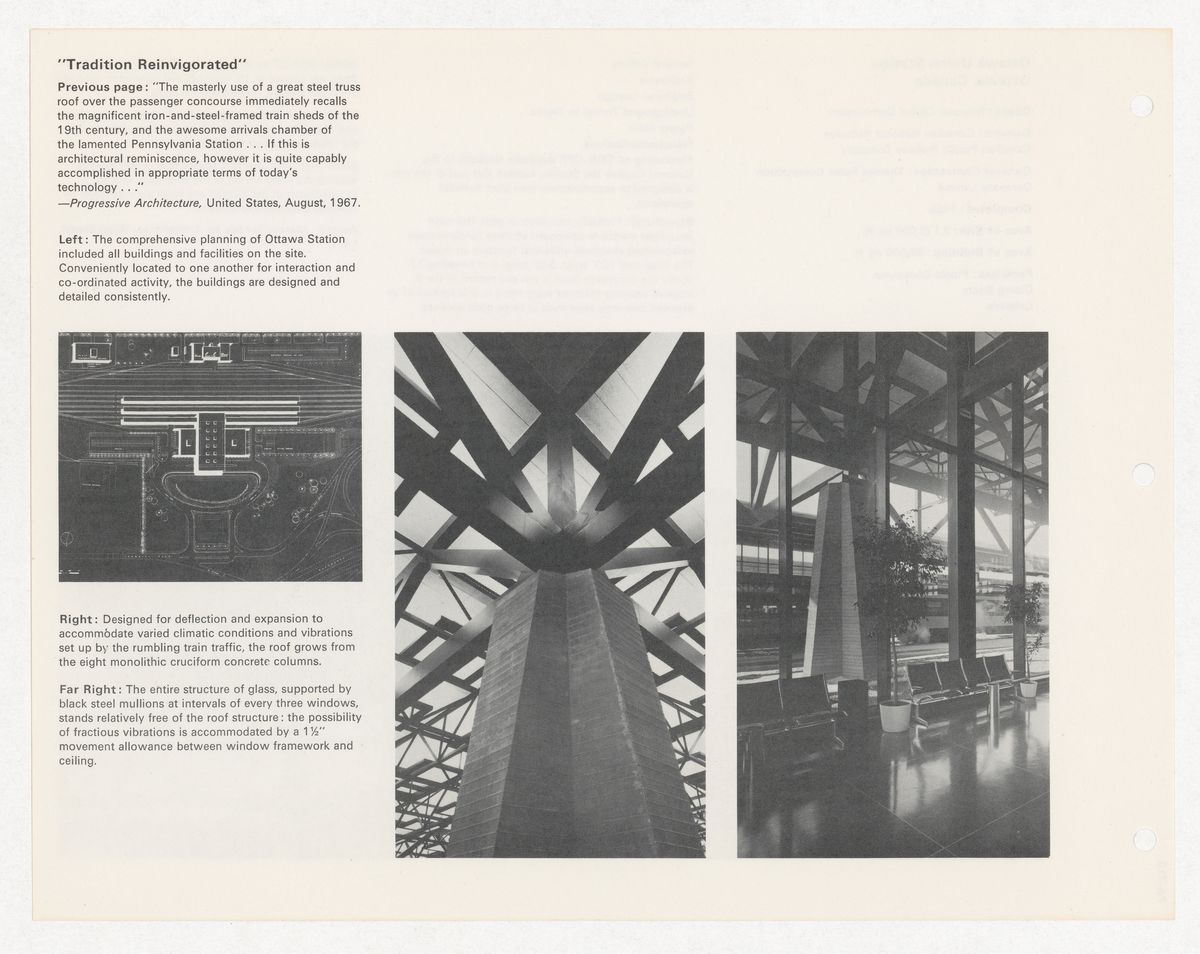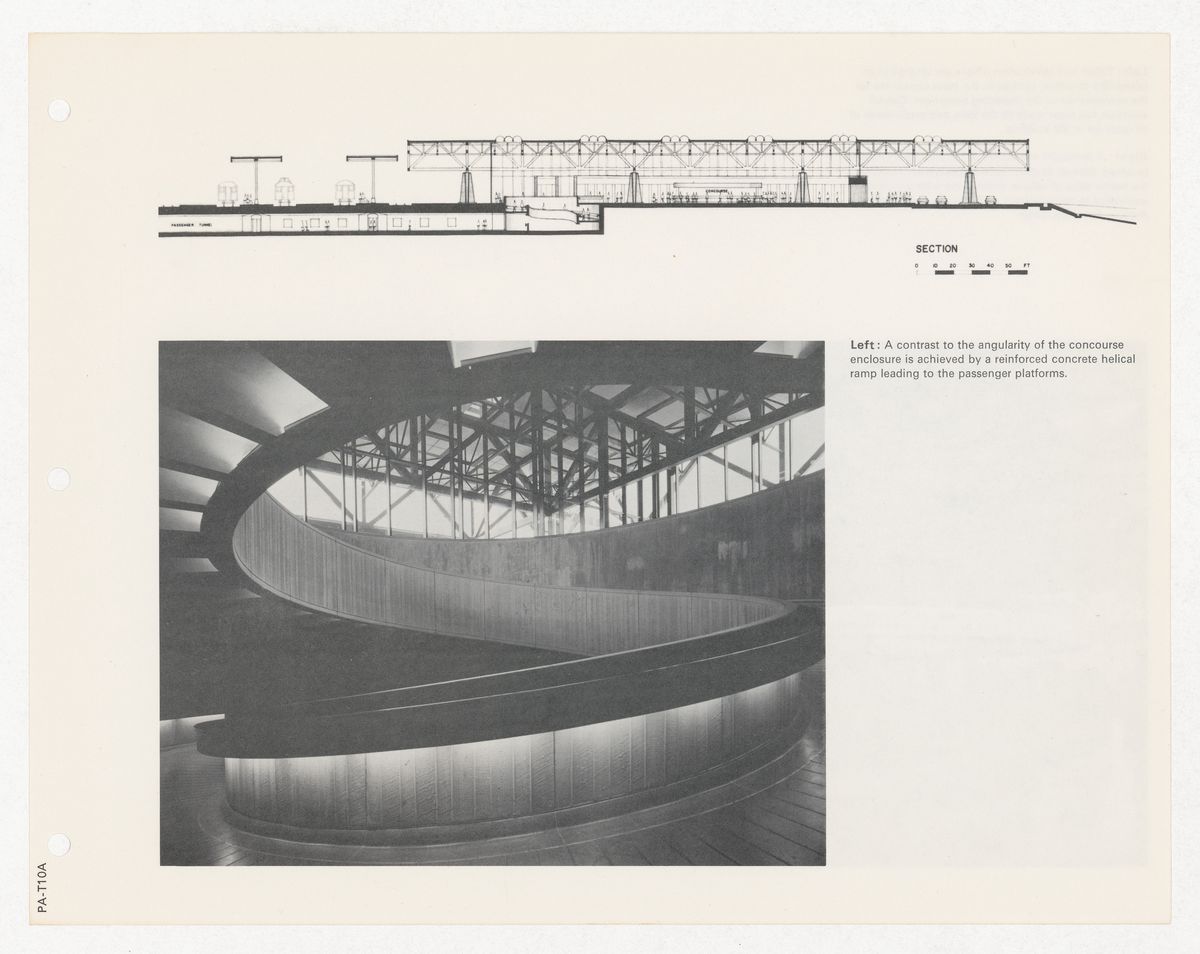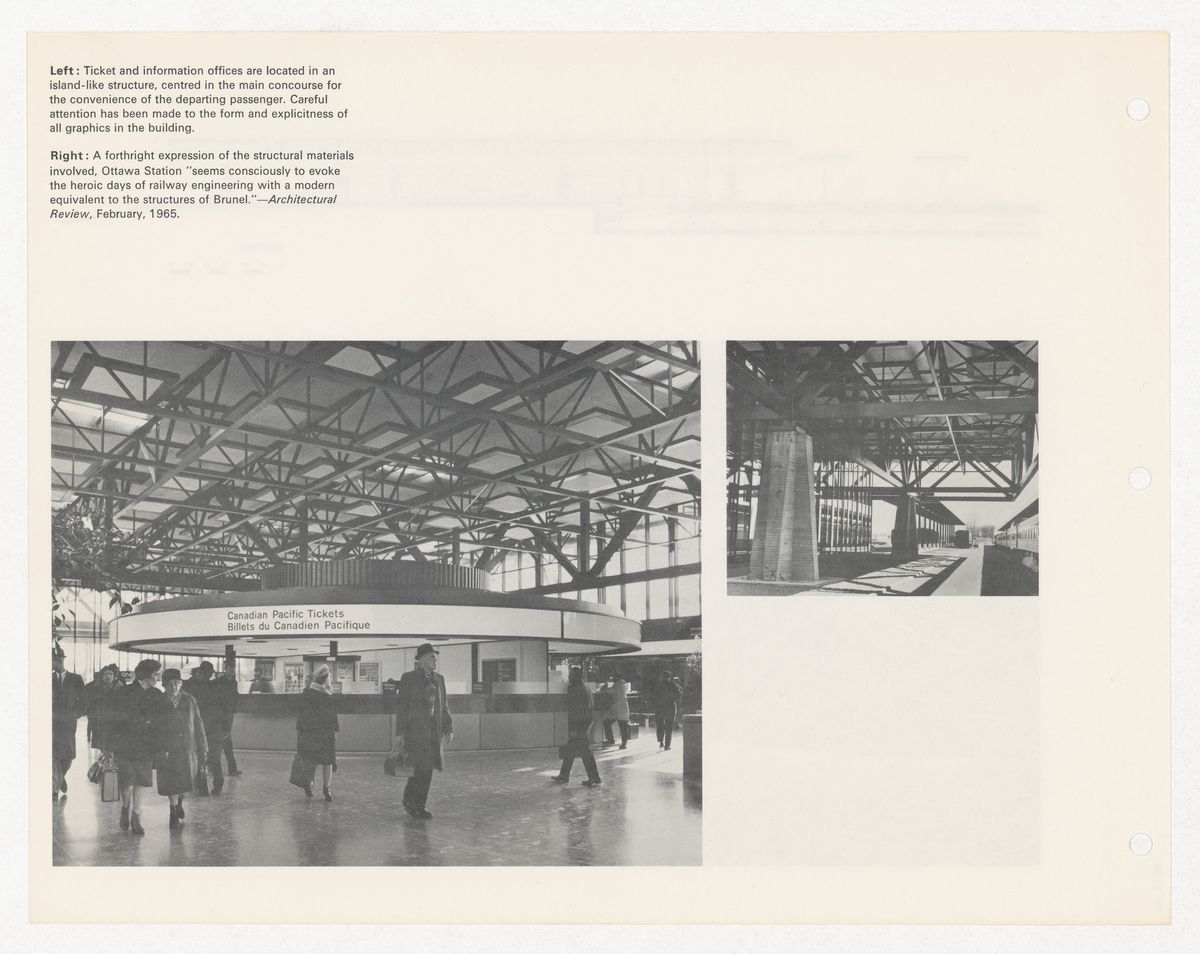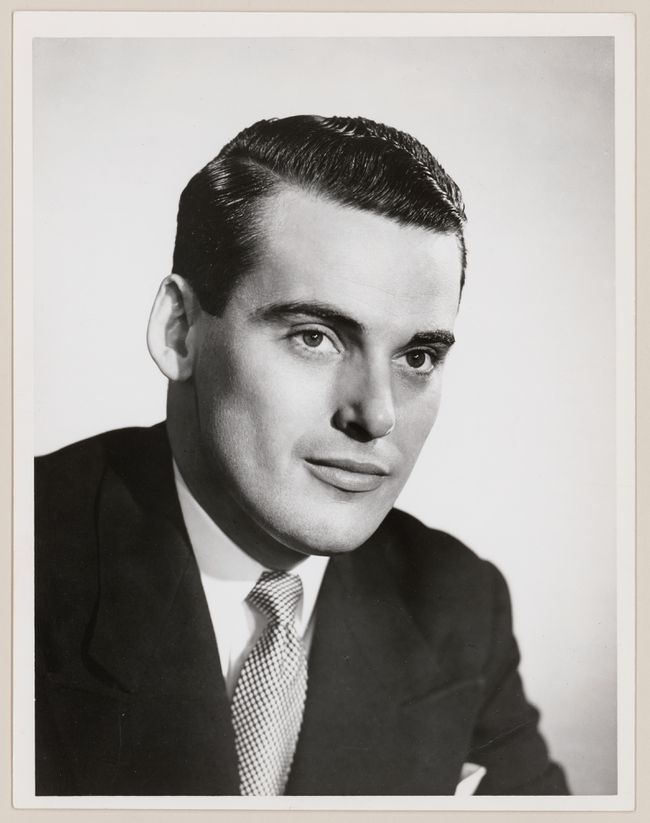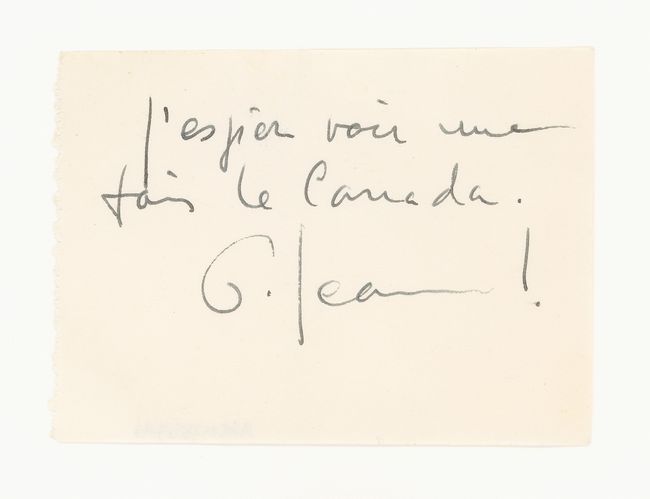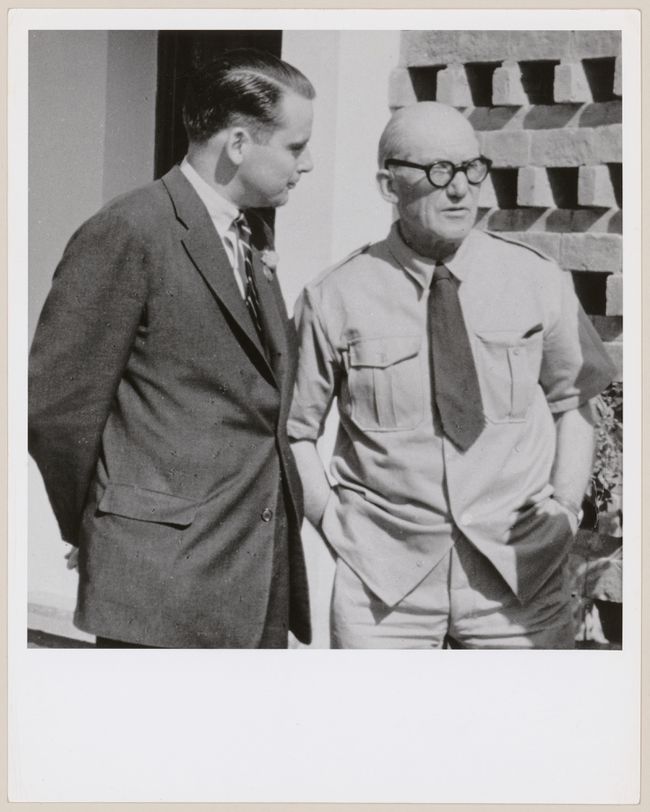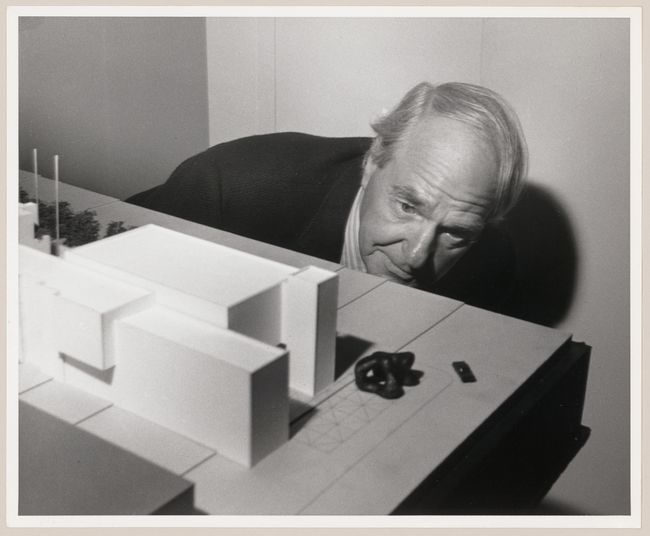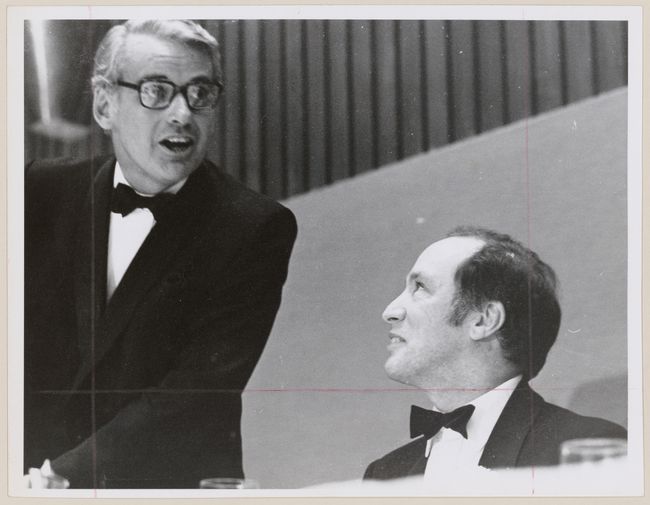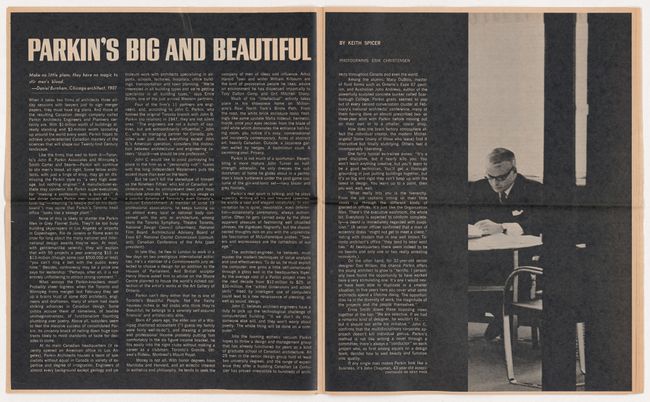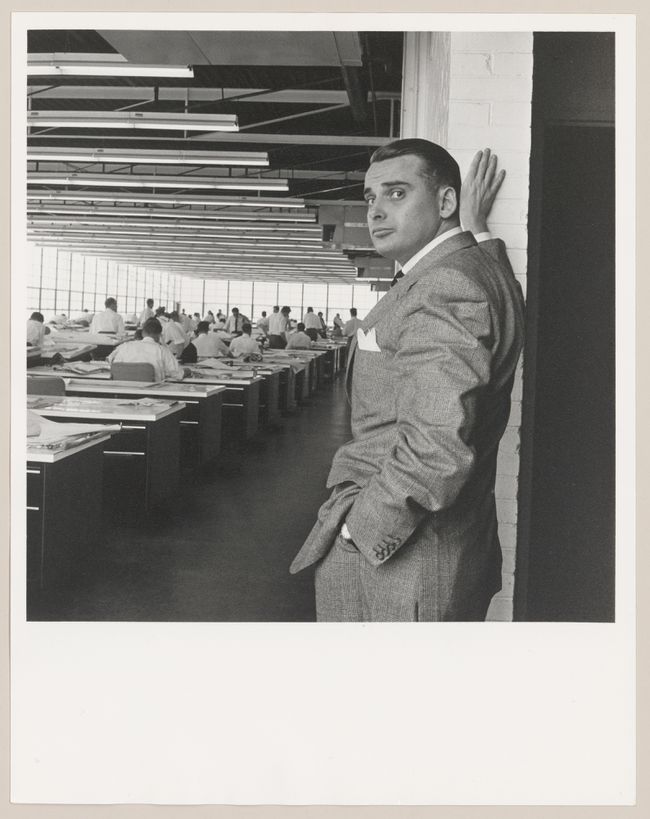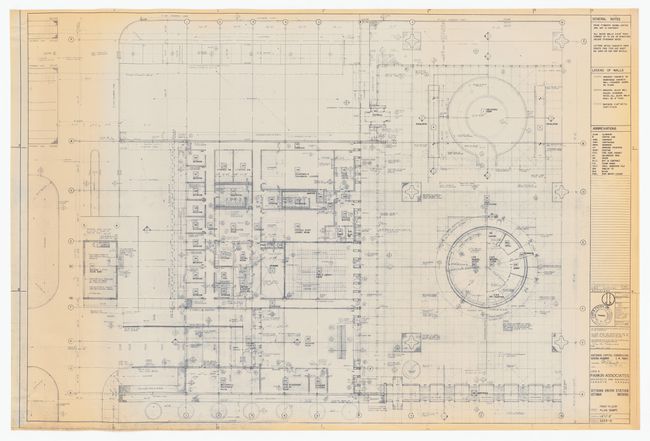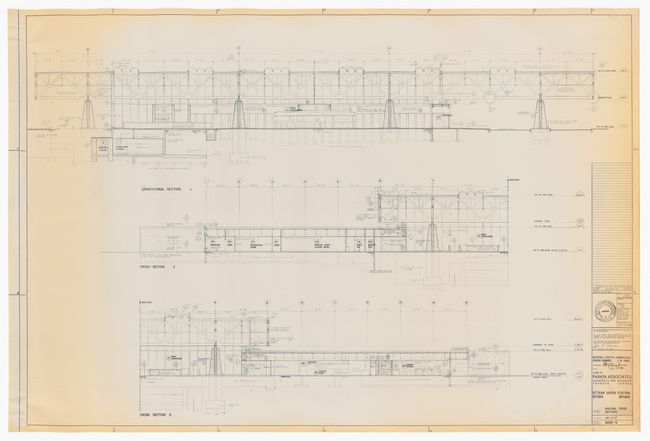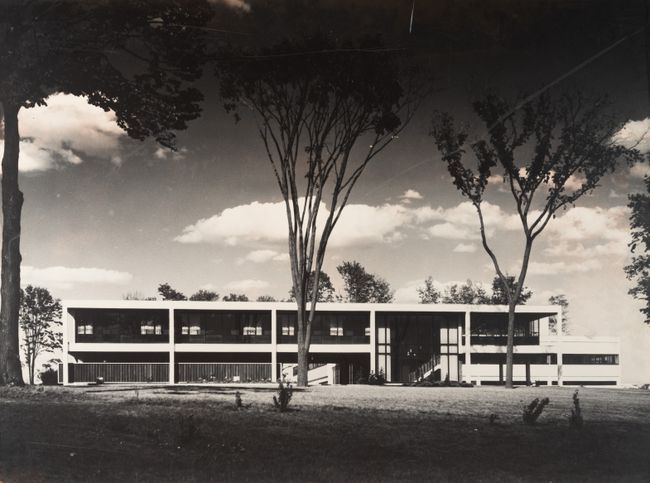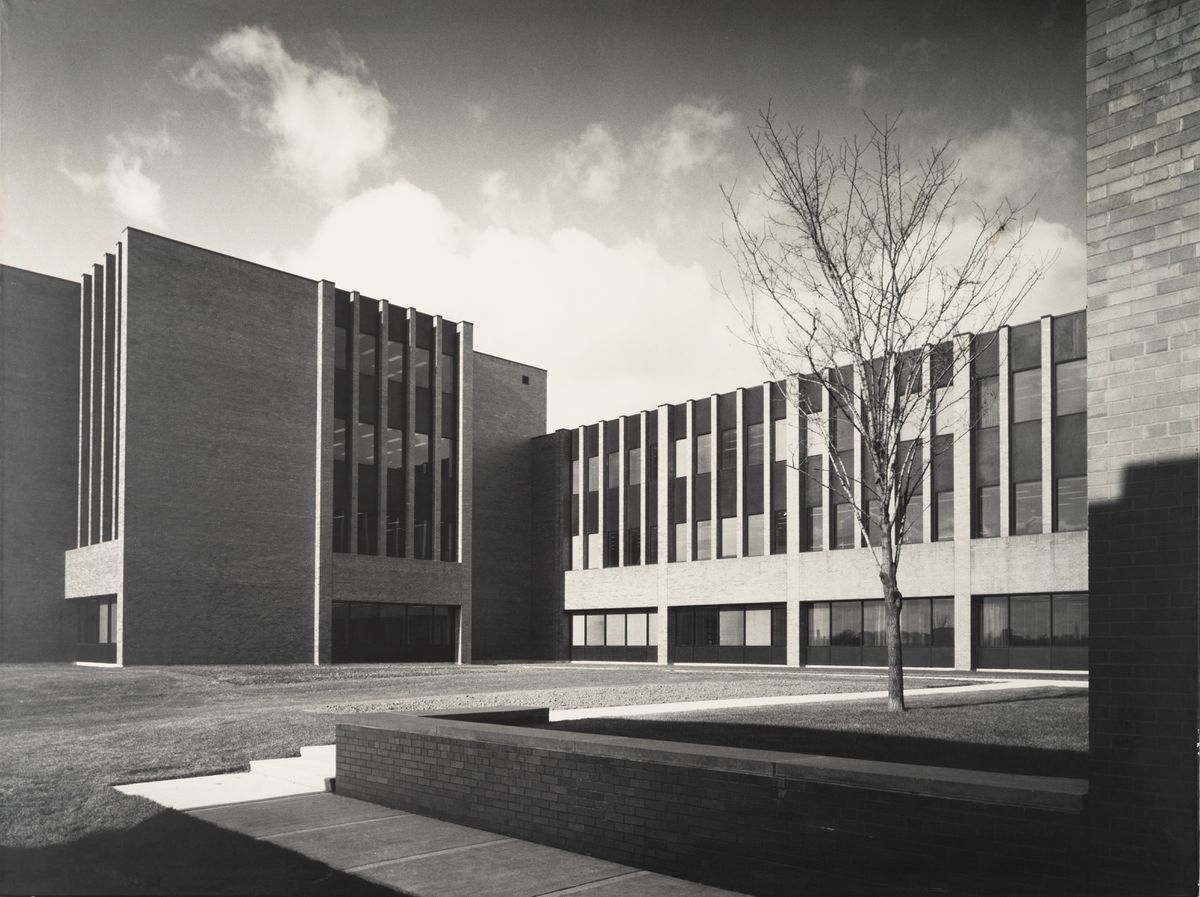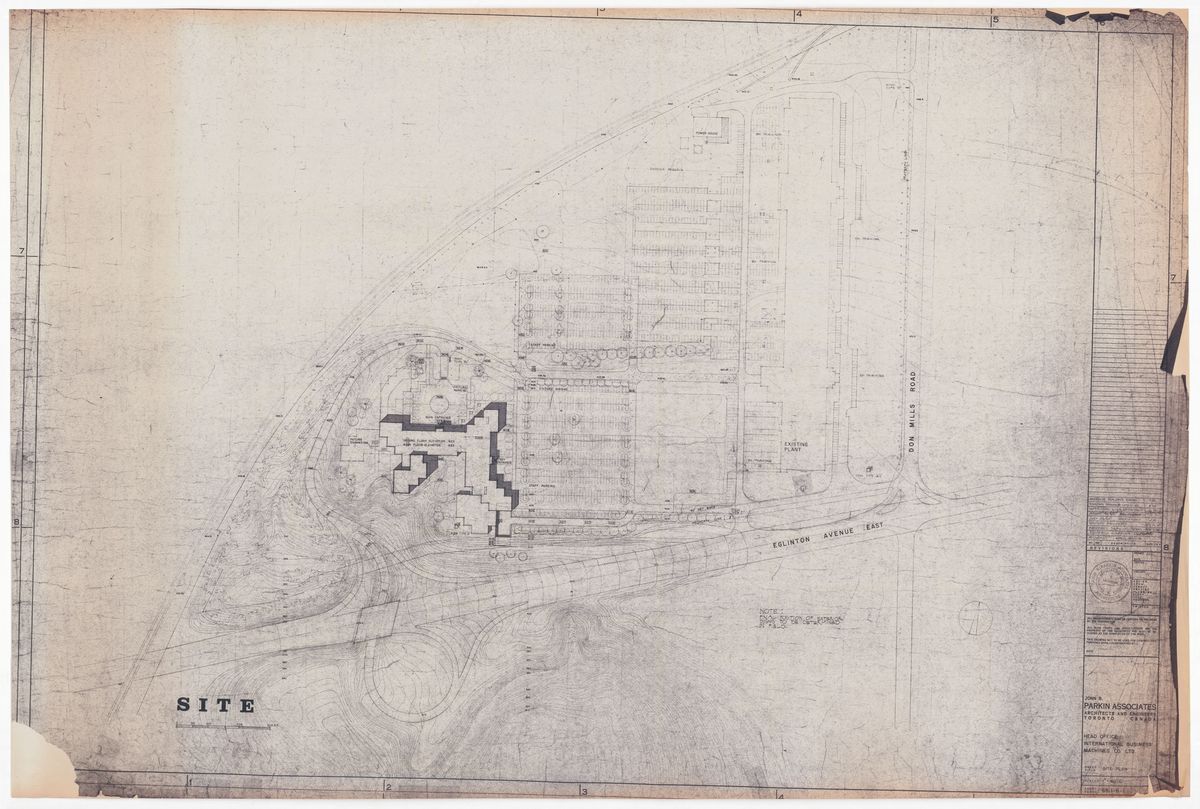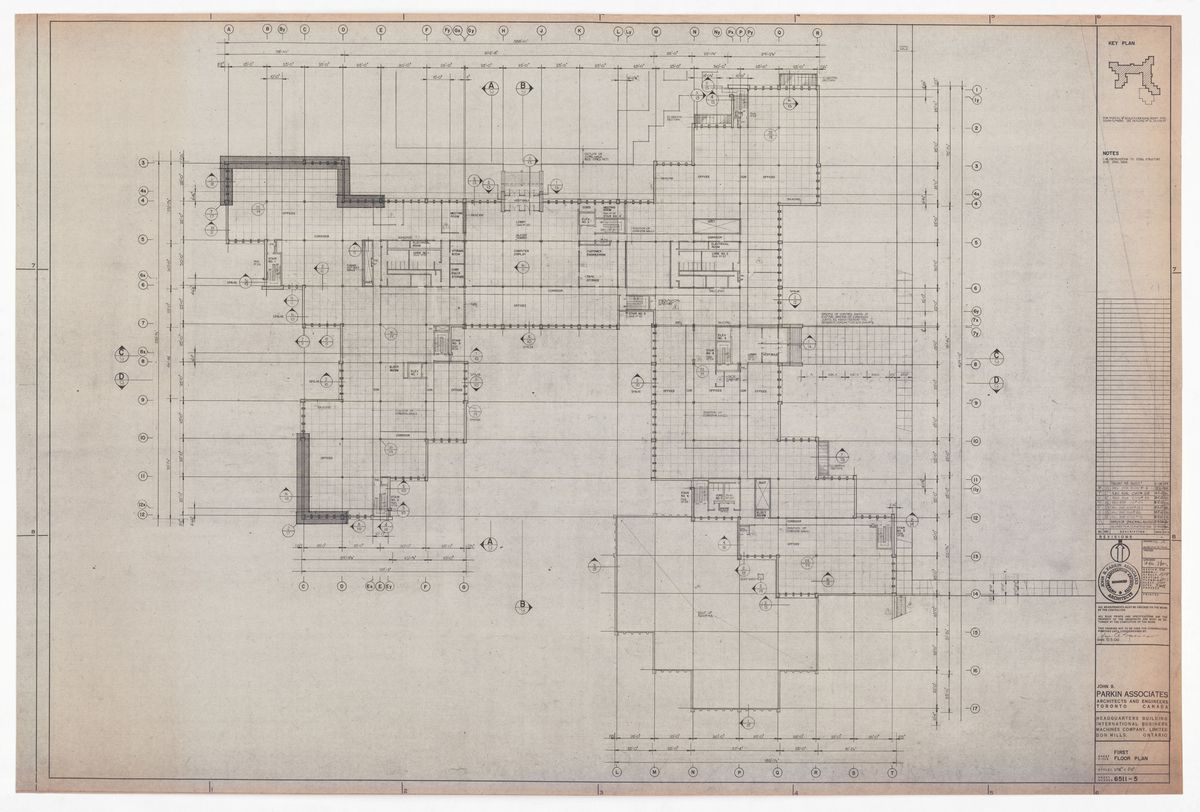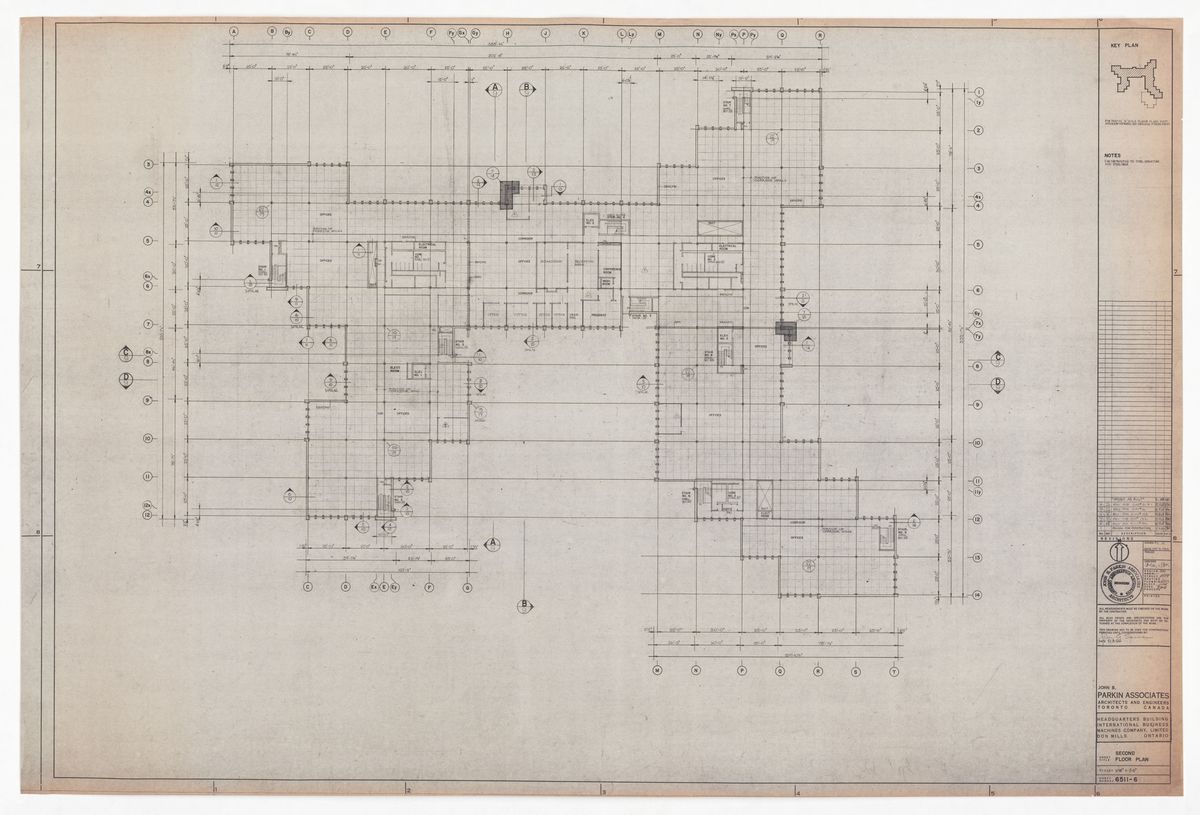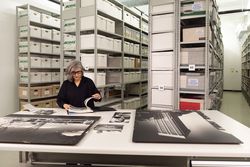The Power of the Image
Shirley Blumberg on the John C. Parkin fonds
Canada experienced a profound transformation in the years following the Second World War as the country underwent unprecedented growth throughout the 1950s and 1960s. Social, cultural, and economic transformation fueled an optimistic national spirit, a sense of prosperity, and the belief in a bright future.
This optimism found fertile ground in architecture. Cities across the country were eager to embrace international modernism as a new era in architecture swept the world. As the term implies, international modernism was put forward as a universal application of an architectural style, one with little consideration for local context in terms of place, culture, or tradition. It was a new architectural language aspiring to ignite social change and embracing technological advances in construction.
John C. Parkin played a significant role in bringing the International Style to Toronto and designed his finest buildings during those two postwar decades. However, in keeping with the Canadian predisposition toward self-effacement, his work and influence has never been fully appreciated locally or internationally. The scale, optimism, and aspiration of Parkin’s buildings during this period is striking. Many of his designs are singular object buildings in an open landscape, located in the rapidly expanding inner suburbs of Toronto. Parkin fully embraced postwar modernism and the abstract formal beauty of his designs was exceptional.
John C. Parkin worked as lead designer for John B. Parkin Associates (no relation) from 1947 to 1968, when he left to establish his own firm. Many of the buildings addressed in this essay were designed during his tenure at John B. Parkin Associates.
An Architect of Influence
The John C. Parkin fonds at the CCA provides a fascinating portrait of the man and reveals the extraordinary quality of his work during the 1950s and 1960s. Parkin was passionate about abstract art and its relationship to architecture—as was his wife Jeanne, a committed and effective advocate for contemporary Canadian artists—and he had an avid interest in collaborating with artists and sculptors.
The archive also demonstrates that Parkin was a groundbreaking force in the modernization of Toronto, even before he collaborated on two of Toronto’s most celebrated buildings in the mid-1960s: Viljo Revell’s New City Hall and Mies van der Rohe’s Toronto Dominion Centre. The fonds holds many files containing annotated drafts of his published articles, speeches, and lectures. They reveal how actively he advocated for architecture and city building and how he championed architectural education, housing, and the public realm of our cities—issues still relevant today.
The Power of the Image
This was also the era of rapid growth and expansion in advertising, and Parkin was quick to recognize the power of photography to promote his architecture, and himself.
A large file box of photographs demonstrates the importance of his association with Hugh Robertson, one of the founders of Panda Photography. At the time, Robertson was the finest architectural photographer in Canada, consistently producing striking black and white images of modern architecture. Robertson also produced arresting portraits of Parkin. In the fonds there are countless photographs of him, in which he’s always impeccably dressed and most often smoking. Parkin was particularly astute in recognizing the power of the photographic image to effectively merge the marketing of the building and of its designer.
Connections
In one box of correspondence, there’s a file labelled “JCP in India” containing photographs of Parkin and Le Corbusier in Chandigarh. My eye was drawn to a slip of paper slightly larger than a business card displaying a short note in a very elegant hand: “J’espère voir une fois le Canada.” It was signed C. Jeanneret. Having revered Le Corbusier throughout my architectural studies, it was thrilling to find an original note from Le Corbusier to Parkin.
In other correspondence files, there are photographs of and letters exchanged with Henry Moore during the design of the Henry Moore Galleries at the Art Gallery of Ontario. In a draft of an account published in the 1973 book Henry Moore in America, Parkin gives a fascinating and detailed account of how the Moore Galleries came to be at the Art Gallery of Ontario.
Other drafts of Parkin’s speeches and published articles are equally fascinating. In an address to the Society of Architectural Historians in Boston on 27 January 1962, he recounts an experience he had as a student at the Harvard Graduate School of Design, during a relatively intimate dinner arranged by the students for Le Corbusier when he visited Boston. Assembled at the Oxford Grill for this occasion was not only Le Corbusier, but also Alvar Aalto, Marcel Breuer, Paul Rudolph, and Hugh Stubbins, among others. Gropius, who was Parkin’s professor at Harvard, was unable to attend as he’d been called to Chicago for the funeral of Moholy-Nagy. Parkin managed to provide somewhat imperfect translation for Le Corbusier’s French. These were heady times, described by Parkin as being infused with a “kind of missionary zeal and faith in the new architecture.” Having been an architecture student in the early 1970s, I have a sense of what he meant.
Panda Associates, Henry Moore looking at a model of the Henry Moore Sculpture Centre project for Art Gallery of Ontario, Toronto, 1971. ARCH285459, John C. Parkin fonds, CCA, Gift of Jennifer A.C. Parkin
A New Paradigm for Practice
Parkin was as ambitious in developing a new design direction for Canadian architecture as he was in inventing a new paradigm for professional practice. He believed that “Without a clear concept for professional practice, the art of architecture is impossible.” His reflections were greatly influenced by the way Albert Kahn organized his practice in Detroit in the 1920s and 1930s, which involved introducing industrialization to the organization of the office and regarding architects as specialists, not generalists. There was a machine-like efficiency to his practice, based on the belief that design could only be perfected through rigorous control. Perhaps thanks to the implementation of Kahn’s organizational model in Parkin’s practice, John B. Parkin & Associates became the largest and most influential firm in Canada in the late 1950s and 1960s.
In an article by Keith Spicer for The Globe Magazine published on 5 July 1969, John C. Parkin is quoted as declaring: “I distrust empiricism and intuitive thinking.” Spicer goes on to describe the Parkin office as having “a crisp military efficiency to serve the clients.”
Parkin regarded architects as “social artists,” yet his staff conformed to a corporate organizational ideal. There is an iconic photograph of the office in Don Mills, revealing row upon row of young men in white shirts and ties working at their drawing boards, while he looks to the camera in the foreground. All were cleanshaven—beards were frowned upon.
He was proud of the way his practice integrated engineering disciplines and specification writers; at the time this was unprecedented. He offered his clients modern design, which he delivered on time, and within an economical budget. It was a brilliant business strategy that went a long way in convincing Toronto’s conservative clients to accept the International Style.
The Early Work
In the post-war period, Parkin designed superbly accomplished, quintessential modernist buildings such as the Ontario Association of Architects (OAA) Headquarters in Toronto (1954), the Toronto International Airport (1965, later known as Terminal 1), and Ottawa’s Union Station (1966). The archive clearly reveals how the first and the third of these projects, while of very different scales and expressions, shared a strong spatial idea. Union Station’s two-storey concourse focused on a substantial helical ramp which connected passengers to the platforms below. The OAA building responded to a sloping site with an intimately scaled ramp that fluidly connected upper and lower levels.
On the other hand, Terminal 1 was renowned for its innovative and futuristic design and its revolutionary concept as the world’s first circular terminal. The design was predicated on each gate not being more than a two-minute walk from the parking garage. Yet the sculptural form and functional organization that was so acclaimed was ultimately its undoing. As jets became larger and passenger volume increased, the design’s inflexibility rendered it obsolete.
Parkin also designed several elegant suburban corporate office buildings, notably Ortho Pharmaceuticals (1955-56), Imperial Oil (1960-62), and Bata Headquarters (1962). Each project exemplifies a similar design approach—low rectangular forms, with the design focus on the elevations. The architectural innovation was in the sculptural qualities of the cladding and structural systems.
Leafing through the drawings in the archive, it was striking to see how spare and diagrammatic the plans were for these early office buildings. They were underdeveloped, without any apparent consideration of the quality of the interior workplace environment. Even Toronto’s extreme climate had little impact on the design, with the facades glazed regardless of orientation or energy consumption.
The Promise not Realized
Along with the drawings and photographs of his projects, a promotional brochure produced by John B. Parkin Associates reveals how his approach evolved with the design of the IBM Headquarters built in 1965, a decade after Ortho Pharmaceuticals.
The building plan was influenced by the distinctive topography of the site, located in a ravine in North Toronto. The configuration of the floorplates was more sensitively developed than in previous projects, delivering more intimate workspaces. These were beautifully connected to nature, while protected from heat and glare by the rhythmic articulation of the facades and the use of solar bronze-tinted glass. The massing was composed of solid and fractured volumes, clad in hues of brick that harmonized with the natural landscape. In contrast to the universal tenets of International Modernism, Parkin’s design was particularly attentive to place, human comfort, climate, and the environment. He prioritized the quality of the interior workplace. Panda’s compelling photographs of the building show what an exceptional project it is.
What is fascinating about the John C. Parkin archive at the CCA is that it covers his work for John B. Parkin Associates, as well as the portfolio of his subsequent independent firm, the Parkin Partnership, established in 1968. While the latter office went on to produce high-quality professional buildings in the 1970s, the promise of Parkin’s earlier career was not fully realized, and the work became increasingly corporate and commercial. Sadly, this trajectory isn’t uncommon for an architectural career. Perhaps Parkin’s ideas about professional practice, initially so successful, proved too restrictive and inflexible in the long term.
In Retrospect
The work of John C. Parkin was rooted in his time. As a female practitioner, it’s not lost on me that it is typical of the male-dominated profession of his generation. Happily, the practice of architecture is rapidly evolving to include a greater diversity of designers. That diversity and a more inclusive profession hold out the promise of future generations of architects, who might respond more thoughtfully and effectively to the enormity and complexity of global challenges.
My hope is that the CCA’s inclusion of the John C. Parkin archive in the Find and Tell program will renew our interest in this architect’s important body of work and that it will inspire, as well as inform, those generations of architects to come.
Shirley Blumberg was in residence at CCA in 2022 as part of Find and Tell, a program that promotes new readings that highlight the intellectual relevance of particular aspects of our collection today.
Related residency
